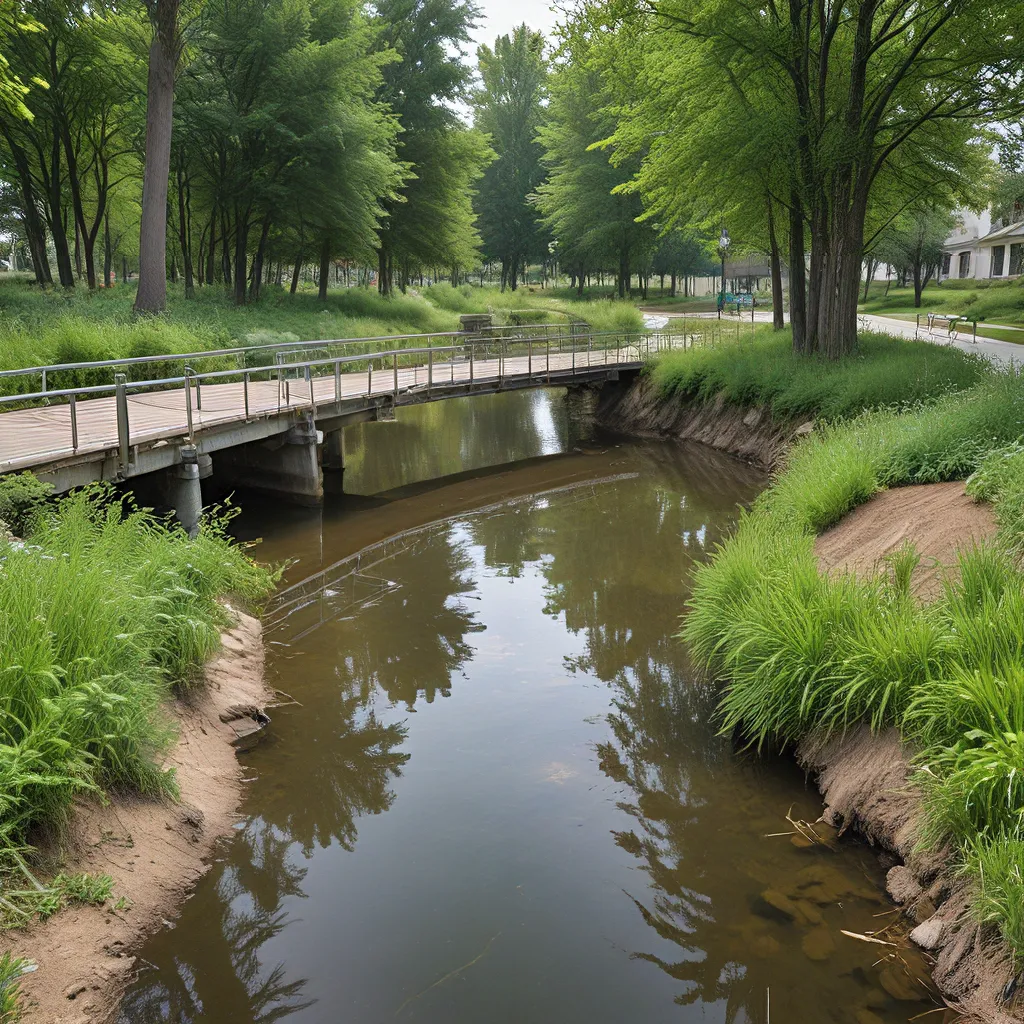
As someone who’s passionate about the environment and sustainability, I’ve always been fascinated by the hidden world of wastewater management. It’s an essential but often overlooked aspect of urban infrastructure, and I’ve been excited to dive deeper into how it can intersect with the creation of greener, more livable cities.
Rethinking Wastewater: Beyond Traditional Approaches
Traditionally, wastewater treatment has been viewed as a purely functional, utilitarian task – something to be tucked away out of sight and out of mind. But as our understanding of the importance of urban ecosystems has grown, I’ve become increasingly convinced that we need to take a more holistic, integrated approach.
Why settle for a sterile, industrial wastewater facility when we could be harnessing that same infrastructure to enhance biodiversity, support urban agriculture, and create inviting green spaces for our communities to enjoy? It’s a win-win situation, and the research I’ve been digging into suggests that this kind of integration is not only possible, but increasingly becoming a best practice around the world.
Multifunctional Greenspaces: Leveraging Nature’s Services
One of the key insights I’ve gleaned is the incredible potential of multifunctional greenspaces – areas that combine natural elements like plants, wetlands, and ponds with wastewater treatment technologies. These hybrid spaces don’t just treat our wastewater; they also provide a host of ecosystem services that benefit both the environment and the people who live nearby.
For example, constructed wetlands can be used to naturally filter and clean wastewater, while also serving as habitats for a diverse array of wildlife. Urban farms or community gardens can be integrated into the landscape, using the nutrient-rich water to grow food crops. And picturesque ponds and streams can become recreational hubs, offering people a peaceful oasis in the midst of the city.
Enhancing Urban Resilience
But the benefits of this approach go beyond just aesthetic and recreational improvements. Integrating wastewater management with urban greenspaces can also enhance the resilience of our cities in the face of emerging challenges like climate change and population growth.
By leveraging natural processes like evapotranspiration and groundwater recharge, these hybrid systems can help reduce urban heat island effects, improve stormwater management, and even replenish aquifers. And as urban populations continue to swell, these multifunctional spaces can provide critical green infrastructure to support the overall health and well-being of our communities.
Overcoming Barriers and Driving Innovation
Of course, transitioning to this more integrated approach isn’t without its challenges. There can be regulatory hurdles to navigate, concerns about public health and safety, and the need to coordinate across different municipal departments and stakeholder groups.
But the research I’ve been exploring suggests that these barriers are not insurmountable. In fact, cities around the world are already pioneering innovative solutions that demonstrate the immense potential of this approach.
In Vancouver, Canada, for example, the city’s Rain City Strategy is working to integrate stormwater management, urban greening, and wastewater treatment into a cohesive, nature-based system. And in Singapore, the Active, Beautiful, Clean Waters program has transformed the city-state’s waterways into vibrant community hubs that provide a range of ecological, social, and economic benefits.
A Future of Integrated, Resilient Urban Environments
As I reflect on all that I’ve learned, I can’t help but feel a sense of excitement and optimism about the future of wastewater management. It’s no longer just about efficiently treating our sewage and disposing of it – it’s about harnessing the power of nature to create more livable, sustainable, and resilient urban environments.
By integrating wastewater infrastructure with the design and development of our cities’ green spaces, we have the opportunity to unlock a whole new realm of possibilities. Imagine neighborhoods where walking trails, community gardens, and natural wetlands seamlessly intertwine with the hidden networks that keep our cities running. It’s a future that’s not only more aesthetically pleasing, but also better equipped to handle the challenges we’ll face in the years and decades to come.
Of course, getting there will require a concerted effort from policymakers, urban planners, and local communities. But based on what I’ve seen, I’m confident that the solutions are out there – and that with the right vision and commitment, we can transform the way we think about, and interact with, the vital systems that sustain our urban lives.
So if you’re like me and you’re curious to learn more, I’d encourage you to explore the services and expertise that companies like Alpha Wastewater have to offer. Who knows – maybe together, we can play a part in shaping the cities of the future, where wastewater management and urban greenspaces work hand in hand to create a more sustainable, resilient, and livable world.